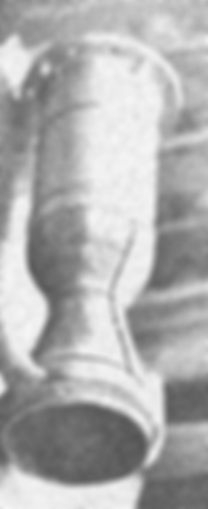You read it first here!
In the sixties, with the cold war at its tightest and the threat of Soviet Union the greatest, Urho Kekkonen, then president of Finland, with inside info about the coming world politics problems, ordered a crash program of massive air defence developments. That included very long range very fast missiles. Since the project was secret and Finland had to remain neutral, no help from either superpower or their allies could be used. Sweden as another neutral country officially declined as well. The country was left with indigenous means.
But the Finnish industry had basically been force-built when the war reparations had to be paid to the Soviet Union, and the after the war born large age groups had just completed education and were itching to get their hands on challenging projects, the nation was ready for a wide variety of new developments – rocketry among them.
The first test rockets were built in the beginning of the sixties in Helsinki and used solid propellants. The first test runs were run just outside Helsinki in a gravel pit, but mostly they were not satisfactory, with explosions and bad performance (it was commented later by the experts that the propellant was too soft and also was IR transparent so ignition was not constrained to the surface). No names are known to have been assigned to these early tests.
A bit later Finland managed to get an undercover German rocketry expert from Brazil, a former Peenemünde engineer whose name was so secret that to this day it has not been uncovered, and with his help the switch was made to liquid propellants. The liquid propellants required more complexity but offered higher exhaust velocity (and mass ratio with pumps), which made individual missiles more expensive but the total amount needed less, as the area covered was larger. (Missile size was limited by the carrying Sisu truck.) The propellants were nitric acid and methanol (ethanol was avoided since people would have gotten drunk on it anyway). Since Finland had no aluminium production capability, highly chosen, prime quality, well tested and processed wood was used instead for the fuselage and aero surfaces. The engine was quite small, and it produced only about 5 kN of thrust. The combustion chamber was made of steel. Only one picture of the hardware has survived, one shot of the regeneratively cooled combustion chamber:
Due to the lack of time to develop larger engines, several of these small engines were planned for the booster, and one for the sustainer / maneuver stage. It is unknown if there were any flight tests.
Anyway, the crisis passed, and development was canceled. It is rumored that the foreign expert left the country.
Decades passed, and in the late seventies / early eighties, a certain successful unnamed (I have promised to keep it secret) heavy industrial company got interested in the technology and hired the old experts again (and again in secret, this time for company competetive reasons), now aiming for commercial satellite launch and European co-operation (since Finland didn’t have much IT technology back then, it was felt that the western Europeans would build the payloads). Large test launch facilities were built in desolate central Lapland at the army artillery and missile proving grounds. But after only two low suborbital test launches (both successful), it was decided that the industry was too politically hazardous – Finland’s joining of the European economic co-operation agreements required that they do not compete in the space sector, and everything was wiped under the rug again. The lox – kerosene engines were big full flow staged combustion ones in the roughly Thor class, 1000 kN, and were designed with indefinite reusability and high efficiency in mind with the company’s world top class process and chemical industry knowledge (though they were heavy, since aerospace engineering knowledge in Finland was close to nil). The team developed even new metal alloys to solve the high temperature problems. Recovery of the first stage would have been by parachute, and the second stage was expendable. The guidance and navigation unit, called “Sirpa” was developed by contract by the state owned telecommunication corporation, Televa, based on technology from the digital telephone switching center developed slightly earlier.
Only one picture of a test survives, this is a piece of film from an instrumentation camera, with the upper half viewing the outside and the lower half having some instrument readings (that are not shown):
You can see some lakes and green so the test was probably done late in the summer, which means this is the second stage test (the first stage test was done in early spring). The first stage carried the peculiar codename “Kuravesi” (muddy water), which probably comes from the muddy test grounds in Lapland when the very long continuous test runs (a 24 hour continuous test run was attempted but had to be stopped 5 minutes from completion, since a reindeer flock was in danger of wandering in the path of the exhaust flames – their destruction would certainly have given up the existence of the program in the press) that melted the ground frost from a large area. The recovery scheme was named “Silli” (Herring) regarding the fisking out operation – the Finnjet turbine powered fast ferry was actually designed for this capability, having a huge roomy cargo deck with large rear doors. No other names from the very secret program remain. Today the technology is forgotten, and my source said that “if anybody wanted to replicate our work now, it would take as long as then, if not longer, again”.



Pingback: Finnish Secret Projects « Gravity Loss